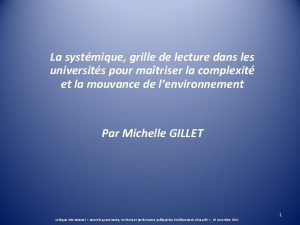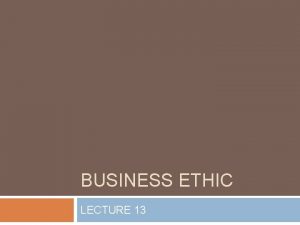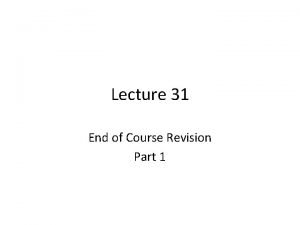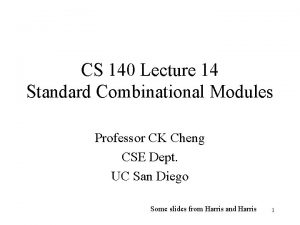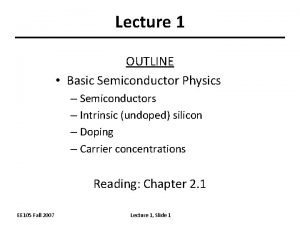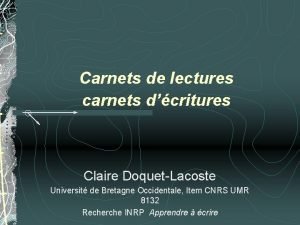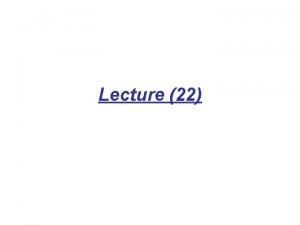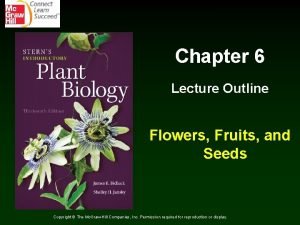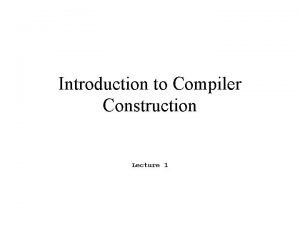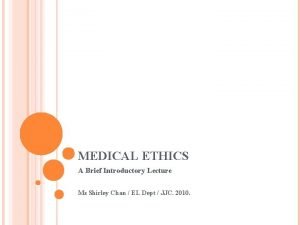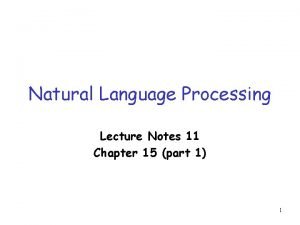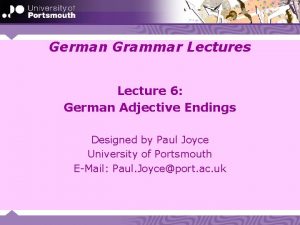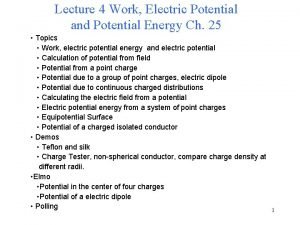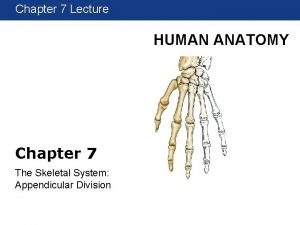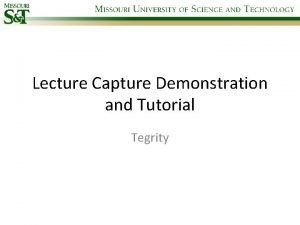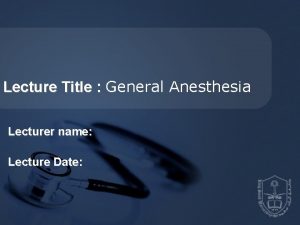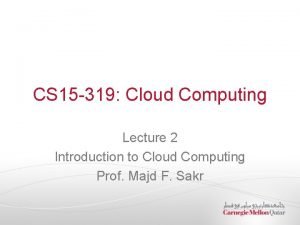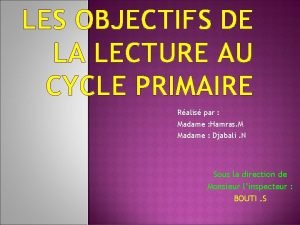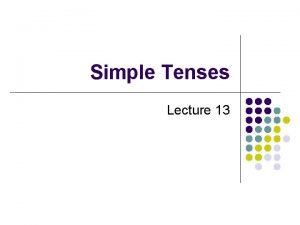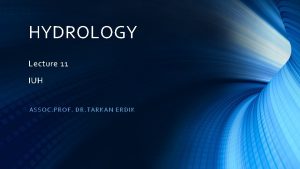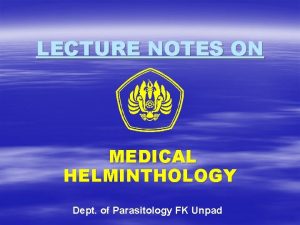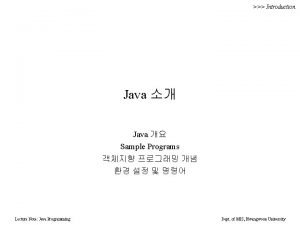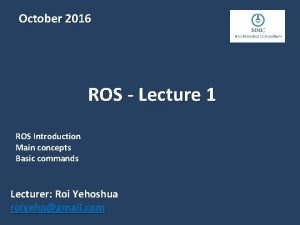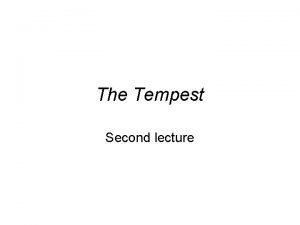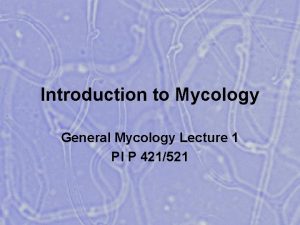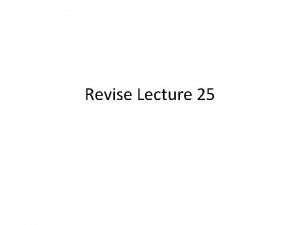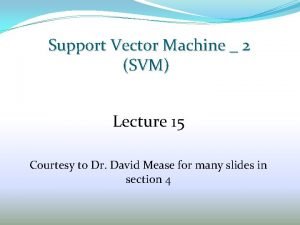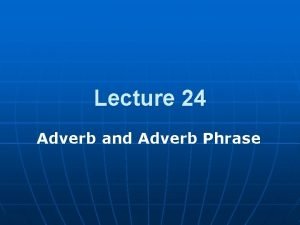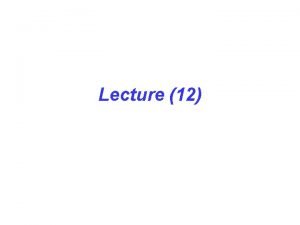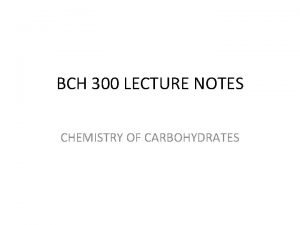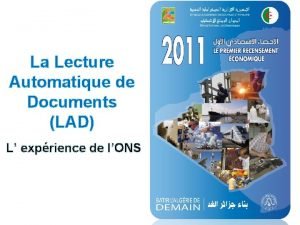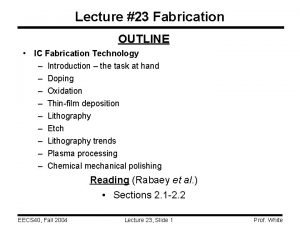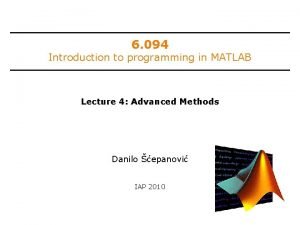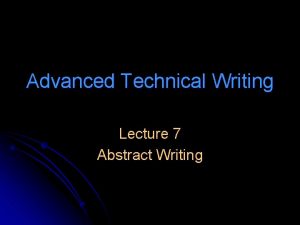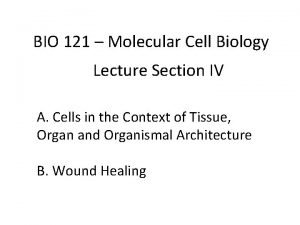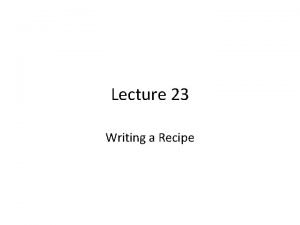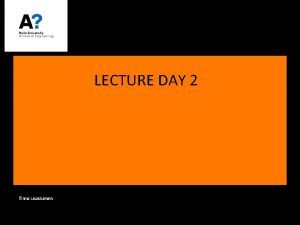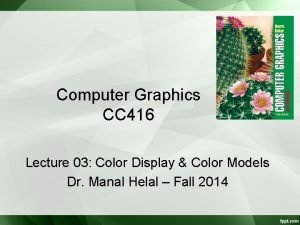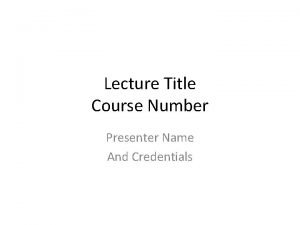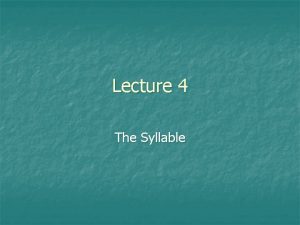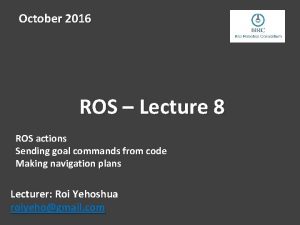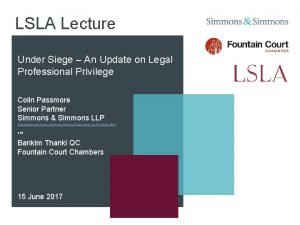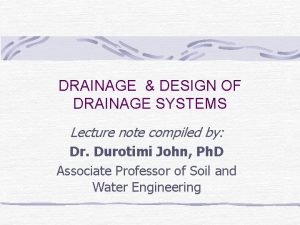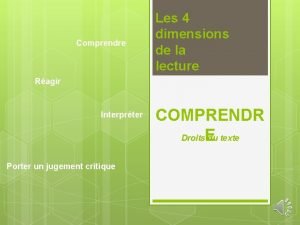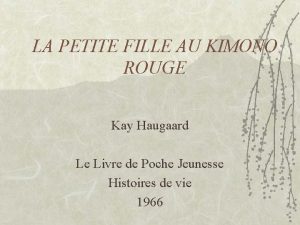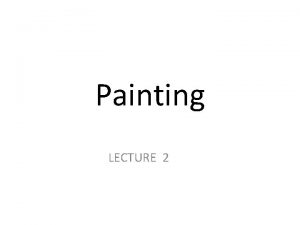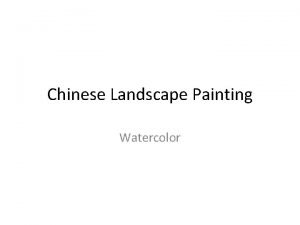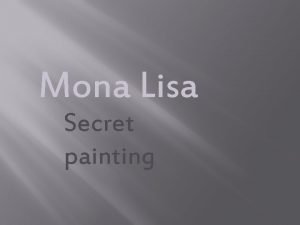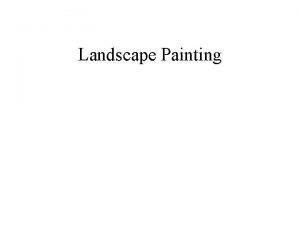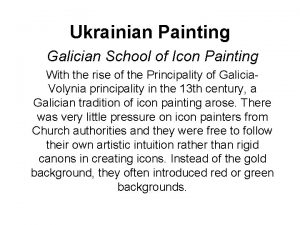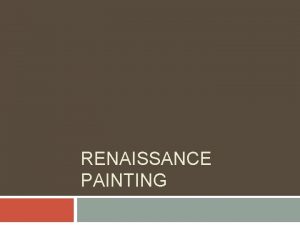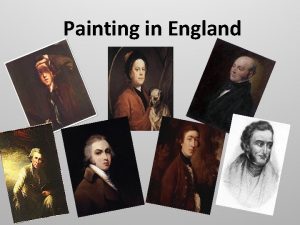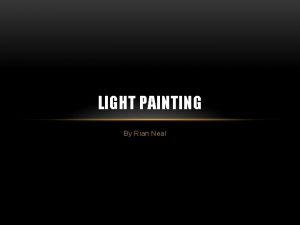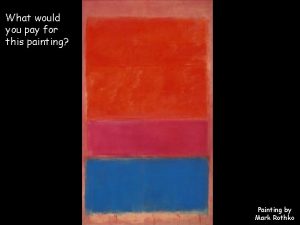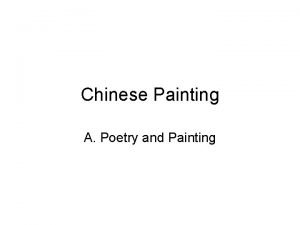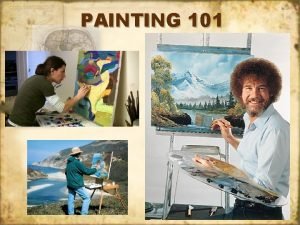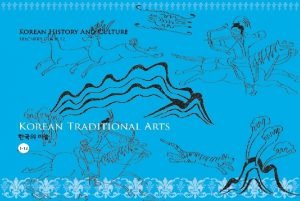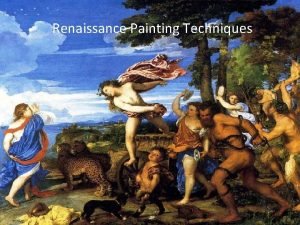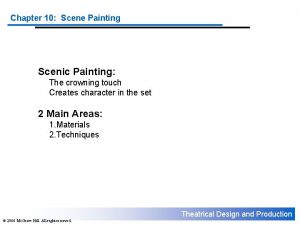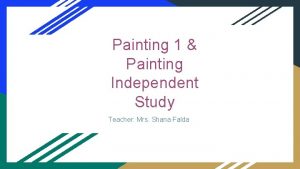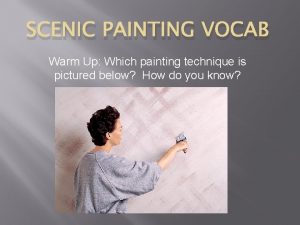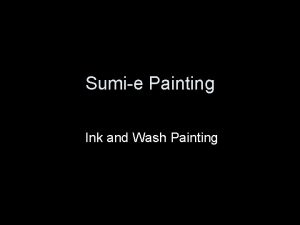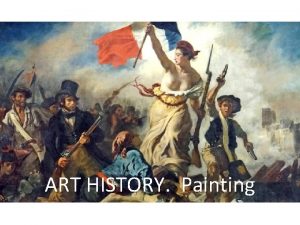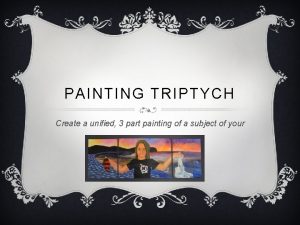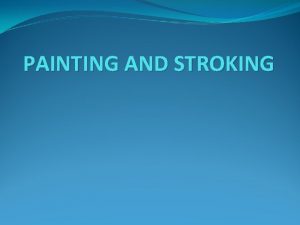PAINTING LECTURE 02 What is Painting Painting is




















































































- Slides: 84

PAINTING LECTURE 02

What is Painting • Painting is the practice of applying paint, pigment, color or other medium to a surface (support base). The medium is commonly applied to the base with a brush but other objects can be used on different surfaces. • Creating an image in any medium on any surface is called painting.

• "Painting only can "describe" everything which can be seen and suggest every emotion which can be felt! • Contemporary artists have extended the boundaries of painting considerably to include; collage, different materials such as sand, cement, straw or wood for their texture.

Types (Genre) of Painting 1. Landscape Painting • A landscape is an outdoor scene. A landscape artist uses paint to create not only land, water, and clouds but air, wind, and sunlight. “Sunrise” by French Artist Claude Monet

Landscape by Amber Munir


2. Portrait Painting • A portrait is an image of a person or animal (from head to shoulders or torso). Besides showing what someone looks like, a portrait often captures a mood or personality. “Self Portrait” by Dutch Great master Rembrandt Van Rijn, 1659

Still life Painting • A still life shows objects, such as flowers, food, or musical instruments. A still life reveals an artist's skill in painting shapes, light, and shadow. “The Basket of Apples” by Paul Cezanne, 1893


Stillife Painting by Amber Munir

Real Life Paintings • A real life scene captures life in action. It could show a busy street, a beach party, a dinner gathering, or anyplace where living goes on. “Luncheon of the Boating Party” by Auguste Renoir, 1881

Religious Paintings • A religious work of art shares a religious message. It might portray a sacred story or express an artist's faith. “Madona of Chancellor Rolin” by Jan Van Eyck, 1435

Techniques of Painting • Mural • Easel • Miniature

Sub-Techniques of Mural Painting • • • Fresco (Boun) Fresco ( secco) Mosaics Stained Glass Tempera Mix Media

1. Fresco (Boun) • Meaning "fresh" in Italian, fresco is the process of painting done directly into the wet plaster on walls. In true fresco, pigments (often of tempera) are applied to small working sections of wet plaster. Once dry, the pigments become a permanent part of the wall.

The Arena Chapel (The Flight into Egypt)



2. Fresco (Secco) • The technique of painting in water-based colors on dry plaster. Also called dry fresco or Secco

Egyptian Tomb Painting 13 th BC

Painting of Buddha (Ajanta Caves)

A 6 th-century mosaic in Ravenna's Basilica di Sant'Apollinare.

Fresco Mural painted by Sadequain

Fresco Mural painted by Sadequain

Fresco Ceiling painted by Sadequain

3. MOSAICS • The design is created by small pieces of colored glass, stone, or ceramic fixed in wet mortar which has been spread over the surface to be decorated. Their slightly irregular placement on a surface creates a very lively, reflective surface when viewed at a distance. This was often used to decorate walls, floors, and ceilings.

At Roman Bath (Sea Horse)

Byzantine Mosaic

Early Christian Mosaic, Istanbul

Christ and the Apostles in the Heavenly Jerusalem, apse mosaic, early fifth century, Rome, Santa Pudenziana.

Old Mosaic (Early Christian Art)


Modern Mosaics

4. Stained Glass • Colored glass used to make decorative windows and other objects through which light passes. Stained glass is often made in large, richly detailed panels that are set together in a framework of lead. Like all colored glass, it acquires its color by the addition of metallic oxides to molten glass. • A purely Western phenomenon, stained glass originated as a fine art of the Christian church, beginning in the 12 th– 13 th century, when it was combined with Gothic Architecture to create brilliant, moving effects.







Interior of the Church ( Stained Glass windows)


Modern Stainglass

5. Tempera • Tempera paint is made by adding pigments ground to a fine powder and mixed with egg yolk to a uniform color. Tempera paint is bold, it is easy to use on any surface and is nearly permanent once dry.


By Sandro Botticelli

Doni Madonna by Michelangelo

Madonna Enthroned by Giotto

Sub-Techniques of Easel painting • • • Oil Acrylic Water Colors Gouache Egg Tempera Ink Enamel Pastels Crayons Encaustic Wax Collage Mix Media

Oil paints • Powdered colors are mixed with a fine oil, usually linseed oil. A turpentine, is also used to thin the colors as desired, so that the paint can be applied thickly and opaquely, or thinly and transparently. The oil paint is applied to a prepared ground ( wood, stones), usually a stretched canvas with a coating of neutral pigment.

Painted by Dr. Khalid Mahmud

Painted by Ali Azmat

Painted by Saeed Akhtar (Self Portrait)

Painted by Sumera jawad

Painted by Rabia Yaseen

Acrylic • Acrylics are artificial compounds developed in the twentieth century. • The binder used includes water, and the paints can be thinned with water, but once the paints dry, they have a glossy, permanent surface that resembles the surface created by oils. • These paints can create most of the effects accomplished in oils, and have the advantage of not requiring the use of turpentine, which is toxic. • The major disadvantage of acrylics is that it will dry much more quickly. Since many artists prefer to be able to re-work the colors, many prefer oils to acrylics. However, many modern artists do choose acrylics.

Painted by R. M. Naeem


Painted by Shireen kamran

Painted by Asim Amjad

Painted By Rabia Yaseen

Painted by Amber Munir

Enamels • Enamel paints are most often like oil paints- , latex (plasticity) or paints with varnish added to them. In use since the 1930 s, enamels can be applied to traditional fine-art utensils (pottery), spray • Applied on walls and windows as well. • Mostly used in mix media.



Water Colors • Powdered pigments are mixed with gum-arabic or a similar substance that will help them to stick on to a surface. The artist then mixes them with water and applies them to a ground, usually paper, with a soft brush. The final effect is that of transparent washes of color. • This method was the most important method of painting in China and Japan from an early date, but did not become popular with European artists until after the 16 th century.

Painted by Dr. Ejaz Anwar







Painted by Amber Munir

EGG TEMPERA • In this method, the pigment is mixed with egg yolk or both the yolk and white of an egg. It is thinned with water and applied to a gesso ground (plaster mixed with a binding) on a panel. This type of painting dries very quickly and produces an opaque, matte surface. The colors tend to dry to a lighter value than they appear when wet. Egg tempera was used for panel painting until the 15 th century.

Collage • The word collage comes from the French verb "coller, " meaning "to paste. " In this technique photographs, news clippings or other objects are pasted on the painting surface and may be combined with painted areas.

Paper Collage

MIX MEDIA • Mix Media means to mix any medium with another and it can be in any medium or surface. • Number of mediums can be used and mixed to produce an art work.

Mix media by Asad Faruki

Mix Media by Asad Faruki

Mix Media by Asad Faruki

Mix Media b Asad Faruki

Mix Media By CY. Towmbly

 01:640:244 lecture notes - lecture 15: plat, idah, farad
01:640:244 lecture notes - lecture 15: plat, idah, farad Grille de lecture systémique
Grille de lecture systémique Lecture sound systems
Lecture sound systems Business and ethics do not mix
Business and ethics do not mix Slagle lecture
Slagle lecture End of lecture
End of lecture Lecture 14
Lecture 14 Makeup lecture meaning
Makeup lecture meaning Lecture 8
Lecture 8 Semiconductor lecture
Semiconductor lecture A quoi sert un carnet de lecture
A quoi sert un carnet de lecture Erzeng xue
Erzeng xue Opposite of lateral
Opposite of lateral Lecture about flowers
Lecture about flowers Compiler lecture
Compiler lecture Medical ethics lecture
Medical ethics lecture Network management principles and practice
Network management principles and practice Elements of design in interior design ppt
Elements of design in interior design ppt Psaume 23 comme lecture sainte cène
Psaume 23 comme lecture sainte cène Natural language processing lecture notes
Natural language processing lecture notes German adjective declension
German adjective declension Electric potential lecture
Electric potential lecture Patella lecture
Patella lecture Tegrity lecture capture
Tegrity lecture capture Lecture title
Lecture title Cmu cloud computing
Cmu cloud computing Architecture lecture notes
Architecture lecture notes Computer security 161 cryptocurrency lecture
Computer security 161 cryptocurrency lecture Traditions in things fall apart
Traditions in things fall apart Flash sons
Flash sons Lecture notes tiu
Lecture notes tiu Les objectifs de la lecture au primaire
Les objectifs de la lecture au primaire Past tense it
Past tense it L'objectif de la lecture
L'objectif de la lecture Hydrology lecture
Hydrology lecture Management fifteenth edition
Management fifteenth edition Electric potential lecture
Electric potential lecture Helminthology notes
Helminthology notes Power system dynamics and stability lecture notes
Power system dynamics and stability lecture notes Healthmis.ng
Healthmis.ng Eclipse erd
Eclipse erd Ros lecture
Ros lecture Orf in bioinformatics
Orf in bioinformatics The tempest lecture
The tempest lecture What is a harmonic wave in physics
What is a harmonic wave in physics Mycology lecture
Mycology lecture Fuzzy logic lecture
Fuzzy logic lecture Features of cheque
Features of cheque Svm
Svm Theology proper lecture notes
Theology proper lecture notes Lecture adverb
Lecture adverb Lecture hall background
Lecture hall background Shape memory alloys lecture notes
Shape memory alloys lecture notes Tarsals lecture
Tarsals lecture Chemistry of carbohydrates notes
Chemistry of carbohydrates notes Lecture automatique de documents
Lecture automatique de documents Ic fabrication
Ic fabrication Matlab lecture
Matlab lecture Abstract example for report
Abstract example for report Principles of economics powerpoint lecture slides
Principles of economics powerpoint lecture slides Enteroendocrine cell
Enteroendocrine cell Hole basis fits
Hole basis fits Lecture outline meaning
Lecture outline meaning A friendly introduction to machine learning
A friendly introduction to machine learning Project procurement management lecture notes
Project procurement management lecture notes Foetotomy
Foetotomy What is angular frequency in shm
What is angular frequency in shm How to write a recipe review
How to write a recipe review Timo laukkanen
Timo laukkanen Lecture
Lecture Biopotential electrodes lecture notes
Biopotential electrodes lecture notes Lecture title
Lecture title Introduction to android
Introduction to android Lecture syllables
Lecture syllables Roi yehoshua
Roi yehoshua Lecture automatique de questionnaires
Lecture automatique de questionnaires Data mining lecture notes
Data mining lecture notes Requirement analysis in software engineering notes
Requirement analysis in software engineering notes Siege lecture
Siege lecture Random ditch system
Random ditch system 4 dimensions de la lecture
4 dimensions de la lecture Lightning elves
Lightning elves La petite fille au kimono rouge résumé par chapitre
La petite fille au kimono rouge résumé par chapitre Natural language processing lecture notes
Natural language processing lecture notes Lecture presentations for campbell biology
Lecture presentations for campbell biology

